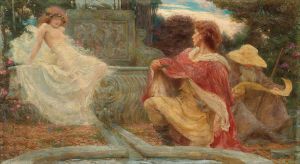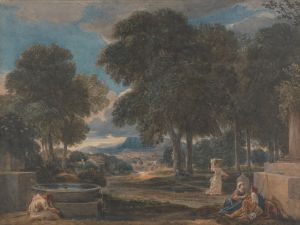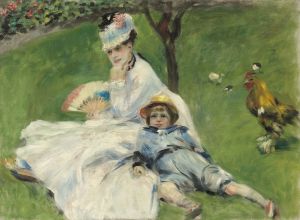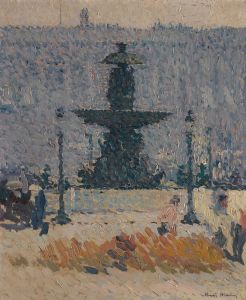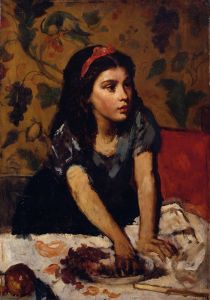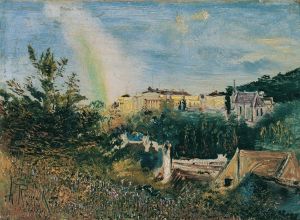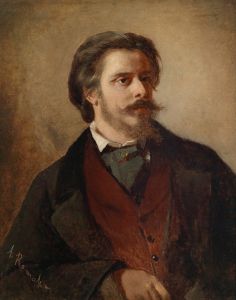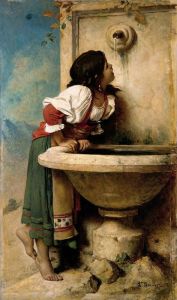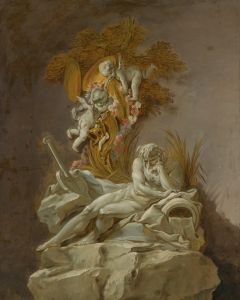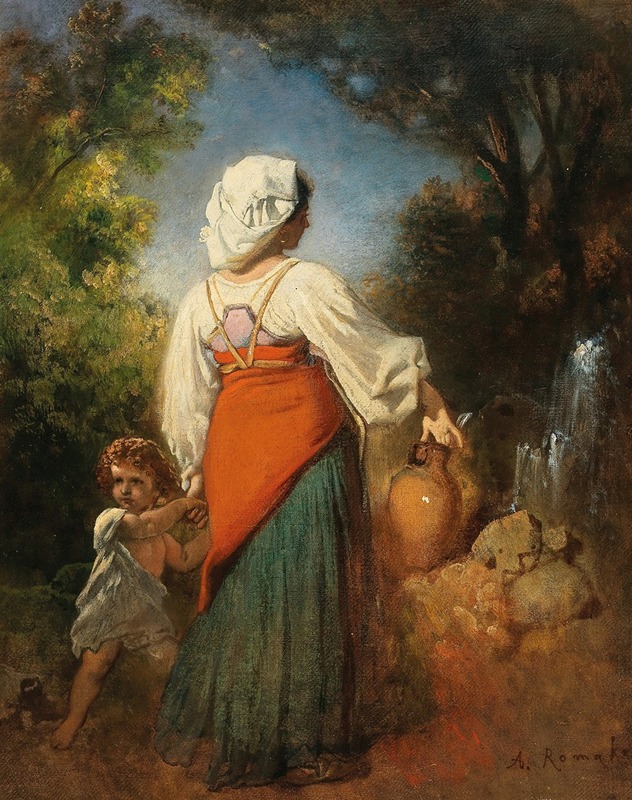
Italienerin mit Kind am Brunnen
A hand-painted replica of Anton Romako’s masterpiece Italienerin mit Kind am Brunnen, meticulously crafted by professional artists to capture the true essence of the original. Each piece is created with museum-quality canvas and rare mineral pigments, carefully painted by experienced artists with delicate brushstrokes and rich, layered colors to perfectly recreate the texture of the original artwork. Unlike machine-printed reproductions, this hand-painted version brings the painting to life, infused with the artist’s emotions and skill in every stroke. Whether for personal collection or home decoration, it instantly elevates the artistic atmosphere of any space.
"Italienerin mit Kind am Brunnen" (Italian Woman with Child at the Fountain) is a painting by the Austrian artist Anton Romako, created in the late 19th century. Romako, born in 1832 in Atzgersdorf, near Vienna, was a notable figure in the Austrian art scene, known for his unique style that bridged the gap between traditional academic painting and the emerging modernist movements of his time.
Romako's career was marked by a struggle for recognition, as his work often deviated from the conventional styles that were popular in Vienna during his lifetime. Despite this, he is now regarded as a precursor to Expressionism, with his work gaining appreciation posthumously for its emotional depth and innovative approach.
"Italienerin mit Kind am Brunnen" exemplifies Romako's interest in capturing intimate, everyday moments with a sense of realism and emotional complexity. The painting depicts an Italian woman and her child at a fountain, a common scene in Southern Europe, which Romako would have encountered during his travels. The choice of subject reflects the artist's fascination with Italian culture and the picturesque quality of its rural life.
The composition of the painting is notable for its use of light and shadow, which Romako employs to create a sense of depth and focus on the figures. The woman and child are rendered with a softness that contrasts with the more defined background, drawing the viewer's attention to their expressions and interaction. This technique highlights Romako's skill in portraying human emotion and his ability to convey a narrative through visual means.
Romako's brushwork in this piece is characterized by a loose, almost impressionistic style, which was somewhat ahead of its time. This approach allows for a dynamic representation of the scene, capturing the transient effects of light and the movement of the figures. The color palette is warm and earthy, typical of Romako's work, and serves to enhance the naturalistic feel of the painting.
The painting is also significant for its cultural context. During the 19th century, Italy was a popular destination for artists seeking inspiration from its landscapes, people, and history. Romako's depiction of an Italian woman and child reflects this broader trend and his personal connection to the country, where he spent several years studying and working.
"Italienerin mit Kind am Brunnen" is housed in the Belvedere Museum in Vienna, which holds a significant collection of Romako's works. The museum's collection provides insight into the artist's development and the broader trends in Austrian art during the 19th century.
Overall, "Italienerin mit Kind am Brunnen" is a testament to Anton Romako's artistic vision and his ability to capture the subtleties of human experience. The painting remains an important work within his oeuvre, illustrating his contribution to the evolution of modern art in Austria.






